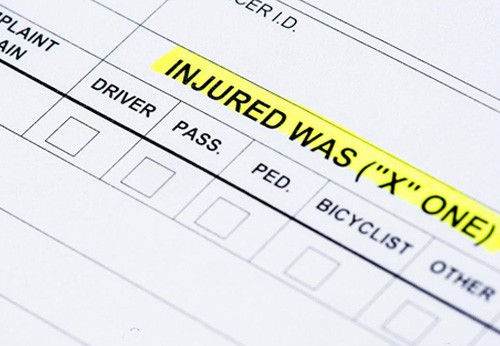
The Dangers Of Missing Evidence
When an insurance company evaluates an injury case for settlement, the number that they come up with is a completely arbitrary value.
Often, they’ll take your medical bills and run them through a software program that assigns the value for each procedure the physician did to you. However, this doesn’t take into account the things you as an individual could or couldn’t do after the accident, or the things that specifically hurt that may not have been mentioned in that specific procedure.
As your personal injury attorney, we comb through your records and find additional evidence to present to the insurance company. An insurance company will pay the minimum of what they think a jury will make them pay – but we can argue for a higher case valuation because we know how to gather evidence. That’s our job as attorneys: to find that evidence, highlight it, and present it.
Without experienced legal representation, all your evidence just gets sent through a standard computer software processing that the insurance company has. Whatever the machine says you get is what you get. This can result in you missing out on thousands of dollars in coverage for a variety of losses.
The Evidence You’ll Need
An important proof of pain and suffering is personal testimony. In particular, the testimony of your family and friends will help prove pain and suffering – if they can testify to your quality of life before and after.
For instance, say you are someone who used to garden every single day, but now you are injured so severely that you might be lucky to get out in the yard once a month. If you know people who remember how you used to be before the accident and we can get their testimony, it helps prove the extent to which you’re hurting.
Another important proof in a personal injury case is photographs. As they say, a picture is worth a thousand words – and showing the physical impact of your injuries can be a huge benefit to your case.
Unfortunately, doctors don’t often take pictures of injuries for their patients’ medical records. Instead, medical records will describe the abrasion – usually in dense medical terms that make it difficult for the average person to understand. On the other hand, if a photo of that abrasion were included in the medical records, it would better communicate how you suffered from the injury.
Consider this, for example… Recently, we settled a case in which we had testimonies from doctors, family, and friends. These people knew our client before and after the accident. Having the testimony was incredibly important – but when we showed the insurance adjuster photos of our client’s scars, he instantly agreed that the claim was worth more than double. As a result, we settled the case at double the original offer, we think, because of that picture.
Gathering Medical Evidence And Documentation
When gathering medical evidence, you should get whatever backs up your injuries and the treatment plan. We at Mullins & Blake Attorneys want to be able to show where you were before the injury, after the injury, and what you went through during treatment. We want to illustrate that you tried, that you pushed through it, and show all the progress you have made.
We also want to document the pain and suffering you experienced in the accident and during your recovery. From start to finish, we structure your records to show what kind of pain you had in the beginning, and what kind of pain you had after reaching maximum medical improvement. All of that is taken into consideration to show the full picture of your pain and suffering claim.
Keeping A Journal And Recording Your Pain On A Pain Chart
We’ve found that juries and insurance adjusters like to see people who are consistent and who are actively participating in their recovery. To do this, we strongly suggest you keep a journal of your healing process, the inconveniences you continue to experience after the accident, and any emotional distress that you struggle with along the way.
While not required, we also encourage you to keep a record of your pain using a pain chart. In the cases where people can provide the extra evidence of a journal and pain chart, it defines a stronger claim, and it shows consistency of your working toward recovery.
With the guidance of a skilled attorney for Personal Injury Law Cases, you can have the peace of mind that comes with knowing that we’ll make it look easy. For more information on Personal Injury Law in Arkansas, an initial consultation is your next best step. Get the information and legal answers you are seeking by calling (479) 750-2334 today.

Call Now To Learn More About Your Legal Rights
(479) 750-2334
(Calls Answered 24/7)
